Science Daily News | 07 Jun 2023

Views (129)
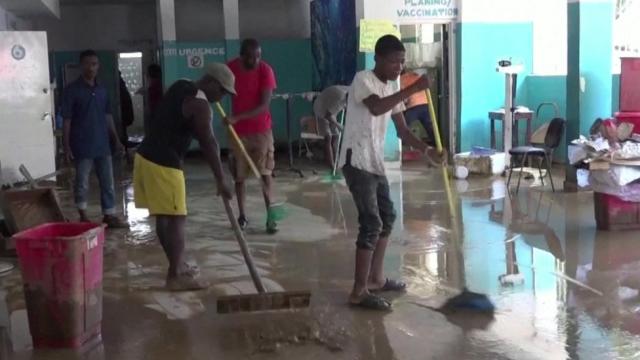
Climate change is harming my mental health
A former climate scientist is among a growing number of people overwhelmed by "eco-anxiety".
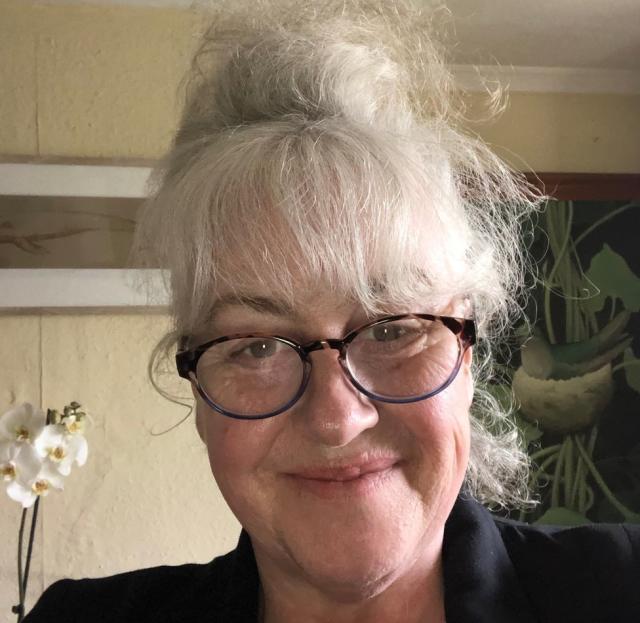
Until two years ago Jennifer Newall was working at the forefront of climate change research.
Her PhD on melting ice sheets and changing sea levels had taken her to Antarctica, Scandinavia and the USA but it was while leading a workshop for primary school children in Glasgow that she began to question what she was doing.
"It dawned on me," she says. "The physics behind this haven't changed in my lifetime. They're not going to change going forward."
Jennifer says she realised action was needed urgently and she no longer had the passion or motivation to continue studying the effects.
She put her career on hold in order to take more direct action but she found the scale of the challenge overwhelming.
Jennifer is one of a growing number of people who have experienced "eco-anxiety" - a chronic sense of hopelessness and fear of environmental doom.
"It presented itself as depression and anxiety," she says. She felt completely paralysed and often unable to get out of bed.
It was during what she describes as her "eco-grief" that 33-year-old Jennifer decided she could not have children.
She says: "I don't feel like I can have children, because a) the world can't cope and b) I would feel guilty bringing any child into this world."
Jennifer didn't complete her PhD on the disappearing ice sheets - although she hopes to one day return to it.
She is now living in Perthshire with her mother and has found that mountain biking has helped her achieve some peace of mind.
Jennifer says she plans to set up a social enterprise project in Aberfeldy, called Soulful Adventures In Nature (Sain), to help people improve their mental health through outdoor activities.
She accepts that the climate situation will worsen - but has learned not to feel personal guilt for the circumstances.
"I had the sense of hopelessness and powerlessness. But, thankfully I chose to keep fighting to change that, and have a world that I do want to be a part of," she says.
There is a growing recognition that environmental change affects not just physical but also mental health - although there is still relatively little research into the cognitive impact of it.
In 2021, Bath University lecturer, psychotherapist and researcher Caroline Hickman and her colleagues examined data from 10,000 young people, aged 16 to 25, living in 10 different countries.
About half of those who took part in the survey reported feeling sad, anxious, angry, powerless, helpless or guilty.
"Over half think humanity is doomed, 56% worldwide, 51% in the UK, 73% in the Philippines," Ms Hickman says.
"So there's more closeness in relationship. Being at a distance from it physically doesn't protect you from the emotional and cognitive impact."
Ms Hickman believes that having an emotional response is good and that people should be concerned about the climate crisis.
"It's healthy to be depressed, to feel grief, rage about this," she says.
However, she says it is important not to get overwhelmed with these feelings.
Dr Bridget Bradley, a lecturer in social anthropology at St Andrews University, is another academic who has has been looking at eco-anxiety.
Her research asks whether this is a new and emerging mental health label and how it can affect family relationships.
Her first small-scale pilot study, in 2021, found it was not just young people who were affected, but also older activists who struggled to get their children or grandchildren to understand.
Her interest in eco-anxiety came partly from her own experience after the birth of her son.
"I was already quite aware of environmental issues and concerns, but having a child just made all of that explode in ways that I wasn't prepared for," she says.
Student Kyle Downie, 22, was an avid climate activist but had to take a break from campaigning due to his mental health. He is now on anti-depressants.
His mental health started to worsen in March last year and while eco-anxiety was not the only cause, he believes it was a factor.
"It wasn't because of eco-anxiety - but I think the eco-anxiety played a big part in being diagnosed with depression," he says.
"I think that's probably the case for a lot of people. Just because that feeling of hopelessness is always there, so it leads to depression."
Kyle has been part of the Fridays for Future protest movement but when he faced burnout, he knew it was time to step away.
Although being surrounded by fellow activists helped him, it wasn't enough to stop him from feeling exhausted.
"When I get burnout, it's usually if I've been throwing myself into activism, not taking enough me time and then it feels very hopeless." he says.
Kyle feels that there isn't any point in continuing his degree, if there is no hope for the future.
He comes from a big family and had previously thought he would want children, but like Jennifer he has now decided he doesn't.
"It's completely changed my thoughts on that from where, I really did want kids, to now I don't because I'd feel too guilty bringing them into a world that is so bleak," he says.
"The future is so bad."
Deer culls credited with green loch wood recovery
Forestry and Land Scotland say trees are thriving around the Cairngorms' An Lochan Uaine.
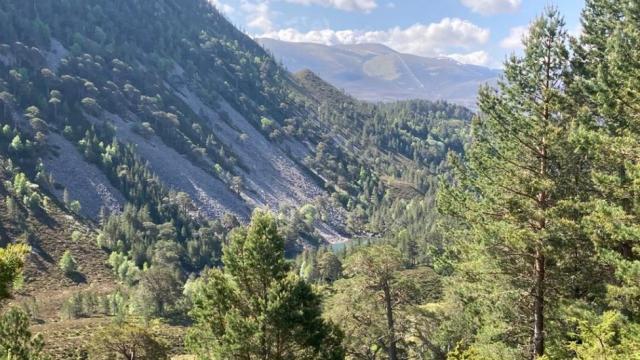
Controls on deer numbers have led to woodland regeneration around the Cairngorms' green lochan, according to Forestry and Land Scotland (FLS).
An Lochan Uaine, south of Aviemore, is one of the area's best-known lochs because of its emerald colour.
FLS said deer culls had allowed woods in the Ryvoan Pass, which overlooks the lochan, to flourish.
The public agency said photographs taken in 1984 and the present day showed the scale of recovery.
An Lochan Uaine - meaning the Green Lochan - gets its colour from the Sun reflecting minerals in rocks in and around the lochan.
According to folklore, the colour is the result of fairies washing their clothes in the small loch at night.
An Lochan Uaine lies within an area of surviving ancient Caledonian Forest.
FLS said a photograph taken in 1984 by a forester, George Dey, and an image taken by one of its ecology interns, Rossina Parvanova, showed how well the woodland had expanded.
Woodland restoration has been ongoing since the early 1990s and has involved increased deer management and removal of non-native trees.
Tom Cameron, an FLS area wildlife manager, said: "In the 1984 photo, you can see the trees were sparse with limited regeneration and vegetation growth.
"That was down to deer trampling and grazing on vegetation and new shoots."
He added: "Ryvoan Pass has regenerated itself incredibly well in the absence of deer.
"You can see the Caledonian pine has expanded back up the hillside, accompanied by the associated native broadleaf species such as willow, rowan and birch.
"We haven't added or planted anything here - nature did this all by herself once we increased deer management efforts."
LeoStella’s CEO works on the next phase of evolution for the satellite revolution
TUKWILA, Wash. — Will LeoStella go beyond LEO? It’s been four years since LeoStella, a joint venture created by BlackSky and Thales Alenia Space, opened the doors of its Tukwila factory and began building Earth observation satellites that BlackSky could launch into low Earth orbit, otherwise known as LEO. Since then, the company has taken on other customers as well — including Loft Orbital Solutions, which offers a turnkey solution for flying and operating satellite payloads; and NorthStar Earth
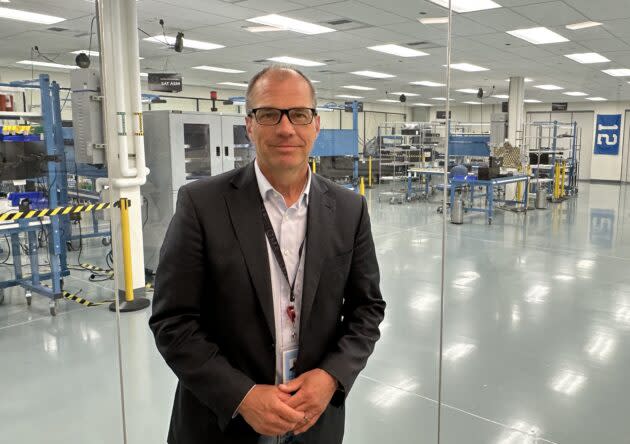
TUKWILA, Wash. — Will LeoStella go beyond LEO?
“What they hired me to do was to grow the business,” Kienberger told GeekWire.
“I’m pretty excited to be in this job,” he said. “I think there’s a lot of growth potential here, and it’s rather unique to create a facility like this in Seattle. There used to be one space operation in Seattle, and it was called Boeing. It’s exciting to see the explosion of the space industry here.”
Kienberger doesn’t consider SpaceX or Amazon to be competitors. He said he prefers to focus on a “sweet spot” in the satellite market: Instead of turning out expensive, custom-designed satellites one at a time, or building thousands of satellites for a mega-constellation, LeoStella is focusing on helping its customers build out midsize constellations consisting of 10 to 50 satellites.
“We really want to focus on helping customers deliver a capability, and that’s what that constellation size does,” Kienberger said. “BlackSky is a great example.”
LeoStella’s 22,000-square-foot headquarters in Tukwila is configured to produce up to 40 satellites annually, but the manufacturing facility can be expanded to increase yearly production to 60 satellites. LeoStella’s workforce is also primed for expansion: The company currently employs 77 full-time employees and contractors, but it’s aiming to boost its workforce to 95 by the end of the year.
What will those new hires be doing? And what markets will LeoStella expand into? Kienberger provided some hints during last week’s Q&A. Here are some of the highlights, edited for brevity and clarity:
GeekWire: BlackSky is pretty much focused on imaging. Is that what you’re continuing to look at for further opportunities?
Kienberger: “No, we’re not going to limit ourselves just to Earth observation imaging. We have a customer looking at an alternate method for GPS. We have a customer asking if we could support a LEO-based communications mission. We’re talking to another customer who wants to do a classified mission. They won’t tell us what it is, so, OK, that’s fine. We’ll sell them the bus [that is, the structural chassis of a satellite]. They like the bus, and then they’ll finish the product somewhere else. That’s not unlike what we did for Loft. We basically sold them the bus.”
Q: What’s your view of the satellite market? Is it a good business to be in?
A: “It has been and still is a very exciting time, especially to be in the small-sat side of the space industry. Having worked in the space industry for a long time, I’m seeing how small satellites have gotten more reliable. We produce satellites very efficiently with a high success record here, which is great. Launch costs are coming down, which means that there are a lot more opportunities to launch vehicles.”
Q: Are there some technologies at LeoStella that have the potential to revolutionize the field? Or is it more the case that there’s no magic bullet, that it’s a question of economizing here and there, and somehow finding ways to get the costs down?
A: “There is a magic bullet, but it’s not a satellite technology. The way that we’ve driven the cost down is the automated manufacturing system. We’ve thought through how the workflow needs to be set up, how to get the rate flow through here. How do I manage inventory from bringing it in the door all the way through the finished product, and can I do that in a more automated fashion?
“And then we’re taking a slightly different approach in qualification. You can take a very conservative approach, where you qualify everything all the time. We’re taking what I would traditionally call more of a qualified similarity approach, which means we don’t need to do full qualification on everything. We certainly do a level of qualification on everything that goes out the door, but not the full set of thermal vacuum cycling on everything. There’s some risk there, but so far it’s paid off.”
Q: Do you ever have a vision of what this industry is going to be like, maybe 10 years from now? A lot of people have said that if you get launch costs down, if you get the cost of manufacturing a satellite down to a certain point, you unlock capabilities we couldn’t dream of. Do you ever dream about what that world might be like?
A: “Well, I tend to dream all the time, but I try to temper my dreams and be realistic. I think launch cost is probably the big driver at the moment. There are a number of data services companies who are startups, who want to build a capability, but they certainly don’t want to spend $100 million to deploy 10 satellites on orbit. If they could spend $20 million or $30 million, they might find an investor who says, ‘Yeah, that’s worth making the investment. Let’s go try that business model and see if it pans out.’
“I think the biggest swinger there, first and foremost, is going to be on the launch services side. To cut down spacecraft costs further, there’s technology coming along that will help. Printed technology is certainly going to drive down costs in the long run. Electric propulsion, once upon a time, was pretty expensive. Now we’re integrating electric propulsion into our new vehicles, not at a premium plus. So that’s great.”
Q: Is that for the BlackSky Gen-3 satellites?
A: “It is. … So, there are certainly new technologies that we want to leverage to stay cost-effective, though you don’t want to be on the cusp of new technology that drives your product cost back up. Just like the advent of flat screens: The first flat screen on the market was $10,000. Now you can go to any store and buy one much larger than the first one for a few hundred dollars, with much higher quality.
“Technology needs to continue to innovate. That will eventually drive costs further down across a number of areas. If we can come up with more effective power methods and more efficient propulsion methods, those are probably the two biggest swingers.”
Q: Some people talk about next-generation radioisotope batteries. Is that the sort of thing you’re looking forward to?
“That’s part of how you advance your mission space farther out. And I think that’s where we’re going in the future. We’re seeing an explosion in low Earth orbit for lots of small satellites. There’s a large push to cislunar orbit, and that’s largely driven by both private industry and the government pushing to go to Mars.
Q: So LeoStella is looking beyond LEO?
A: “At some point, yes. Not tomorrow, but it’s on our future vision list.”
NI Tourism should prepare for more expensive flights, says report
Climate change mitigation will make air travel more expensive, says a Department for Economy report.
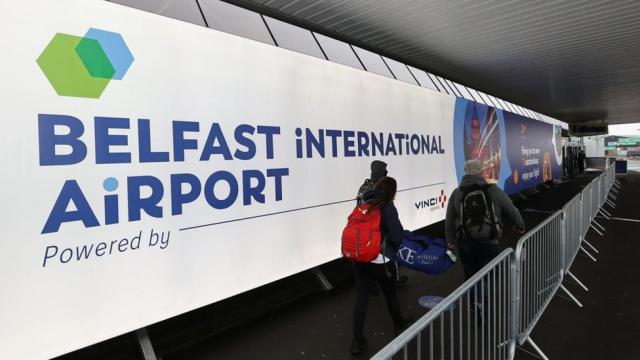
Northern Ireland's tourism industry should prepare for a future in which climate change mitigation has made air travel more expensive, a report says.
It says rising air travel costs "may limit affordability for external tourists".
It added the sector will have to "mitigate against airplane dependency and the rise of carbon prices".
Air routes are the major way in which overseas tourists arrive in Northern Ireland.
The research states: "The dependency on air travel creates a high risk as carbon prices may continue to rise in the future, resulting in a reduction of airline demand.
"Northern Ireland will need to strike the balance between managing the risks associated with rising carbon prices and maintaining connectivity of airports between target tourist markets."
The research uses examples from other countries to suggest that any extra taxes should be used to fund climate and environmental projects.
The study also says that the industry needs to anticipate and limit the problem of "over tourism", which is when the numbers and behaviour of tourists negatively impacts local communities.
It suggests a pilot scheme for tougher regulations covering short stays rents and digital booking platforms in specific locations.
Cumbrian freshwater mussels reproduce for first time in 13 years
Conservationists say the "critically endangered" mussels are "thriving" in the River Irt.

Freshwater mussels at risk of extinction have started reproducing for the first time in 13 years.
Conservationists have been monitoring the River Irt which is home to the "critically endangered" population of about 300 mussels.
Only a handful of freshwater shellfish populations remain in England.
Chris West from West Cumbria Rivers Trust said it was "thrilling" and "heartening" to find evidence the species was reproducing.
Populations have been affected by wildlife crime, habitat deterioration and declining water quality.
It is also not helped by the reproduction process which sees females release millions of glochidia, or larvae, into the water which have to be inhaled by fish to survive.
The glochidia clamp on to the gills of juvenile salmon or trout for about a year before landing on gravel where they bury and grow.
The process is called encystment and the last evidence of it happening in the River Irt, in the Wasdale Valley, was recorded by the Environment Agency in 2010.
To try and help the mussels, conservationists have been improving the habitat of the river by stabilising the river bank, planting willow and trees and adding boulders to the water.
They also released juvenile mussels, which had been bred in captivity, to help increase numbers.
"It's thrilling to find evidence that the population is reproducing. All our previous monitoring has found no evidence of reproduction, so this is heartening to see," Mr West said.
"It's also reassuring to see the mussels released into the Irt are thriving. These plus more that we plan to release over the coming years will significantly boost the population number."
Haiti: Deadly earthquake kills three after floods
A deadly quake has struck the city of Jérémie as much of Haiti reels from the aftermath of floods.

At least three people have been killed in an earthquake in the Haitian city of Jérémie, just days after floods left at least 42 dead.
The 4.9-magnitude quake struck in the early hours of the morning, the US Geological Survey said.
It came in the wake of torrential rains that have displaced more than 13,000.
Prime Minister Ariel Henry said his government and international partners were taking "urgent measures" to deal with the flooding.
The World Food Programme, an agency of the United Nations, said that it would start providing hot meals to the displaced.
Haitian authorities said the three people who died were crushed when their home collapsed. More than a dozen people have also been injured.
Jérémie is a coastal city in the southwestern Grand'Anse department. Two years ago, the region was also badly hit by an earthquake which killed more than 2,200 people.
Jérémie is relatively isolated from the rest of the country and transport links have been further disrupted by the rain.
The main road linking Jérémie with the capital Port-au-Prince passes through the city of Léogâne, where three rivers burst their banks in recent days.
Rescue operations are also being hampered by Haiti's ongoing problem with criminal gangs, which control many areas.
Léogâne resident Phania Cange, whose home was swept away in the floods, told Reuters that her five-year-old son died in the flooding. "I risked losing two (children), but God left the other one hanging in a tree."
She added: "I lost everything. It's good people who give me clothes to wear, I have no one to rely on."
Léogâne Mayor Ernson Henry said that residents in the city were "desperate".
"They have lost everything. The waters have ravaged their fields, washed away their livestock," he told the AFP news agency.
0 Likes
